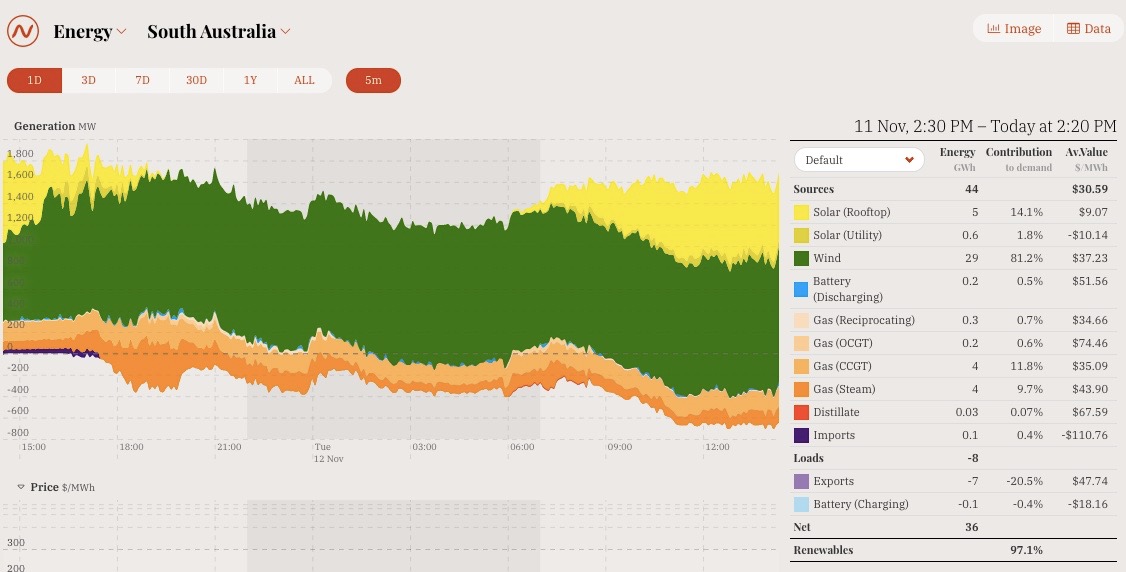
|
|
|
|

|
|
In the above OpenNEM graph of one day's energy generation (2019/11/11) in South Australia:
The Adelaide desalination plant; some statistics from the internet:
Existing and proposed demand-side power managementBatteries and pumped hydropower are at present used in Australia in a very limited way to store energy; there is plenty of potential for more of both. Compressed air energy storage and hydrogen generation have potential to 'soak-up' renewable energy when it is plentiful and cheap.Some industries such as aluminium smelters can reduce their electricity consumption when supply is limited. But at the time of writing none of these technologies or stratigies were sufficiently developed to fill the need. More sensible use of the Adelaide desalinator
The previous SA Labor government has come under a lot of criticism over the desalinator because of its cost and the fact that it has not had a lot of use since being completed in 2011. It would seem to me that a usage relating to the variable cost of electricity would be more sensible than the past all-or-nothing approach.
A note on costsAn article by Lin Crase on the Conversation, 2019/11/14, gave the cost of water from the Adelaide desalinator as $0.95/kL and the price paid by domestic consumers in Adelaide as from $2.39 to $3.70/kL. Lin Crase is Professor of Economics and Head of School, University of South Australia. |
Related pagesExternal sites...Use of the desalinator on Rottnest Island varies according to power availability...Diesel to de-sal on Rottnest Island
Hybrid energy solutions/success stories - Rottnest Island;
On this site...Australia's energy futureGlossary of technical terms relating to wind power Impressive renewable energy developments in Australia Mid-North South Australia, leading the nation in renewable energy South Australia's energy future South Australia's great success in changing toward renewable energy Which electricity generation methods should Australia choose for the near future? Wind farms, the electricity grid and desalination in Australia; a page written in 2004. |